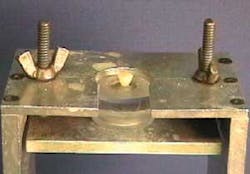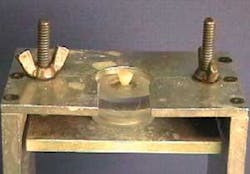Dental materials update
For more on this topic, go to www.dentaleconomics.com and search using the following key words: dental materials, materials update, evidence-based, dental prodcucts, research center.
by Mark Murphy, DDS
Since I will be doing a dental materials update lecture this year, I turned to a local research center for help. In 1984, John Farah, DDS, PhD, and John Powers, PhD, put their advanced degrees to work to provide evidence-based information that helps dentists and their teams select the best products, techniques, and equipment for their practices, saving both time and money.
THE DENTAL ADVISOR in Ann Arbor, Mich. (yes, near the Big House), is an awesome resource for material, technique, and product information. They accept no advertising and rely on subscriptions, product testing, and reprint orders from manufacturers to operate. (My advice to them was to become a nonprofit organization because they hold themselves to the same high standards.) They were the first publication to rate and recommend products to dentists. They have also monitored the clinical performance of many restorative materials over time.
Sign up at www.dentaladvisor.com for a free one-year online subscription. Enter DE2008 in the promo code box for special discounted pricing on paid subscriptions. Their hope is that you like it so well you will consider upgrading to a premium subscription for access to more research information and reports, or renew in 2009.
We need to understand the differences, compatibilities, and handling characteristics of the materials, techniques, and products we use in practice. I found out some things en route to looking up other things at THE DENTAL ADVISOR. For example, there are some simple things I may have been doing that have impacted my material success (or failure) during bonding without my knowing it.
- Ferric oxide-containing cord can contaminate the surface of the tooth such that we may experience a 50 percent reduction in bond strength, even after a 30-second rinse.
- Caries detectorscan reduce bond strength by 60 percent to 70 percent, as can blood and plasma contamination in a restorative site.
- Phosphoric acid etchingthe enamel/dentin surface for veneers or simply pumicing the surface both result in roughly the same bond strength with self-etching bonding agents.
- Not rinsing long enough when using phosphoric acid etch on dentin can cause postoperative tooth sensitivity.
- Generation 6-Type 1 bonding agents (e.g., Clearfil SE BOND) leave you with an acid primer layer at the tooth interface and a resin layer next to the restorative surface. That works well with both light- or self-cured materials. So, if you are placing a composite core, it is better to use a Type 1 bonding agent rather than Type 2.
- Generation 6-Type 2 agents (e.g., Adper Prompt L-Pop) have mixed material presented to both restorative and tooth surfaces because they are not applied in separate layers. The acidity of the bonding agent can affect self-cured resin bond strength adversely (Figures 1 and 2). So it is light-cured bonding agents only for these.
Dr. Powers runs the testing and research lab, while Dr. Farah continues to practice full time in a modern clinic with Drs. Brown, Anderson, and Bunek. He also lectures internationally and stays in close contact with clinical consultants — not to mention he will run his 100th marathon in 2008 and is one of the top runners in his age category internationally. The 250 clinical consultants, opinion leaders, and on-site testing laboratory provide a wealth of current information for us to use in our practices every day. THE DENTAL ADVISOR has about 15 full-time staff members and even offers continuing education at its facility in Ann Arbor.
Mark Murphy is a featured presenter for the National Dental Network and the National Lab Network. He lectures internationally on a variety of dental clinical and behavioral subjects. Dr. Murphy practices part time in Rochester Hills, Mich., and is the director of professional relations at The Pankey Institute. You may contact him by e-mail at [email protected] or visit mtmurphydds.com.


